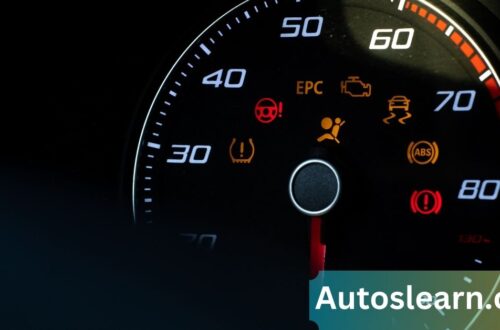If you own an Audi, you may see the “Inspection Due” message on your dashboard. This notification is part of Audi’s Maintenance Reminder System, designed to keep your vehicle in top condition.
But what does it mean, and what should you do when it appears? In this guide, we’ll explain the meaning behind the message, why it’s essential, and how to handle it properly.
What Does “Inspection Due” on an Audi Mean?
The “Audi inspection due” message appears when your car reaches a specific mileage or time since the last service. Audi programs this system to remind owners of routine maintenance to ensure vehicle performance, safety, and longevity.
The system calculates service intervals based on:
- The mileage has been driven since the last inspection.
- Time elapsed (usually once a year).
- Driving conditions include frequent short trips, stop-and-go traffic, or extreme weather.
Ignoring this notification could lead to issues over time, affecting performance, safety, and repair costs.
Why Is the “Inspection Due” Message Important?
Routine inspections are essential for keeping your Audi running smoothly. Delaying maintenance can lead to:
- Increased wear and tear on critical components.
- Reduced fuel efficiency due to clogged filters or aging engine oil.
- Higher repair costs from undetected issues.
- Potential safety hazards like brake failure or tire wear.
Audi engineers these reminders to help you avoid long-term damage and unexpected breakdowns. Addressing the “inspection due Audi” warning on time ensures your car stays in peak condition.
What Does an Audi Inspection Include?

A standard Audi inspection covers several essential maintenance tasks, including:
- Oil and Filter Change – Make sure the engine runs smoothly.
- Brake System Check – Examines pads, rotors, and fluid levels.
- Tire Inspection and Rotation – Ensures even wear and better traction.
- Battery and Electrical System Diagnostics – Checks charging system and connections.
- Fluid Level Checks – Comprises power steering fluid, transmission fluid, and coolant.
- Suspension and Steering Components – Looks for wear or damage.
- Diagnostic Scan – Uses Audi’s onboard computer to detect hidden issues.
The specifics vary by model and year, so referring to your owner’s manual is best.
Also Read: Does Valvoline do Audi oil changes?-Everything You Need to Know
How to Respond to the “Inspection Due” Message:
If your “Audi inspection due” message appears, follow these steps:
- Check your service records – Determine if your last maintenance visit aligns with the recommended interval.
- Schedule an appointment – Book a visit to an authorized Audi service center or a trusted mechanic.
- Avoid delaying service – Prompt inspections prevent costly repairs.
- Reset the message after service – If the message persists after your visit, the technician can reset it using the car’s system.
Can You Reset the “Inspection Due” Message Yourself?
Yes, but only if your Audi has already been serviced. To reset it:
- Do not start the engine; instead, turn on the ignition.
- The infotainment system’s CAR button should be pressed.
- Navigate to Service & Checks > Service Interval Display.
- Select Reset Inspection Interval.
An unresolved issue may require professional attention if the message reappears shortly after resetting.
How Often Does Your Audi Need Servicing?
Audi service schedules depend on whether the vehicle follows a Flexible Regime or a Fixed Regime. The flexible schedule adjusts based on oil quality, driving style, and environmental factors, while the fixed schedule follows set mileage and time intervals.
1. Flexible Service Schedule:
Audi vehicles with a flexible regime monitor oil quality and engine conditions to determine service needs. Depending on driving conditions, oil change intervals typically range between 9,300 miles and 18,600 miles.
- Highway driving or light engine loads → Oil changes closer to 18,600 miles
- Frequent short trips, stop-and-go traffic, or extreme temperatures → Oil changes needed sooner
Even if an oil change isn’t needed earlier, it should be performed at least every two years. The flexible regime helps reduce unnecessary maintenance costs for many drivers.
2. Fixed Service Schedule:
Some Audi models or driving conditions require a fixed service plan, which follows a standard schedule:
- Oil Service – Every 9,300 miles (15,000 km) or once a year, whichever comes first
- Inspection Service – Every 18,600 miles (30,000 km) or every two years, whichever comes first
For Battery Electric Vehicles (BEVs), Audi follows a fixed two-year inspection schedule with no mileage requirement.
3. Choosing the Right Service Plan:
Some owners prefer a fixed schedule for consistent maintenance and budgeting. It ensures that oil service and inspection can be completed together in the second year, reducing overall service visits.
Checking your owner’s manual or consulting an Audi service center can help determine the best schedule based on your specific model and driving habits.
Service, Inspection, and Warning Lights-What They Mean:

Your Audi dashboard displays different lights for maintenance and safety. Each serves a unique purpose.
1. Warning Light:
A warning light signals an urgent issue that needs immediate attention. It may indicate problems with the engine, brakes, oil pressure, or battery. Ignoring this light can lead to severe damage or safety risks.
2. Service Light:
The service light appears when your Audi is due for routine maintenance. This includes oil changes, fluid top-ups, and filter replacements. It’s a reminder to schedule a regular service to keep the car in good condition.
3. Inspection Light:
An inspection light means your Audi needs additional system checks. This could involve brake inspections, belt checks, or diagnostic scans. Addressing this promptly helps prevent future issues and keeps your car running smoothly. Understanding these lights helps maintain performance and safety.
Also Read: Drive System Malfunction Audi-Causes, Fixes, and Prevention
Understanding the Service Due and Indicator Lights on Your Audi Dashboard:
The Service due light on an Audi dashboard appears as a wrench icon with a message like “SERVICE DUE.” This notification means your vehicle requires routine maintenance, such as an oil change, inspection, or other scheduled service.
1. Why the Service Due Light Matters:
Regular servicing keeps your Audi running efficiently and helps prevent expensive repairs. It also ensures your warranty remains valid. Ignoring maintenance reminders could lead to mechanical issues and may void warranty coverage.
2. Audi’s Service Reminder System:
Most Audi models follow either a Fixed or Flexible service schedule. Your vehicle’s onboard system tracks mileage, oil quality, and time since the last service to determine when maintenance is needed. Once a service is due, the dashboard warning light will turn on as a reminder.
How the Audi Service Due System Works:
The service due system in an Audi monitors mileage and time since the last maintenance to determine when service is needed. The Engine Control Unit (ECU) tracks this data and activates the service reminder light when an oil change, filter replacement, or other routine maintenance is due.
1. Mileage-Based Service System:
For vehicles on a mileage-based schedule, servicing includes an oil change, filter replacement, and additional maintenance based on the total distance driven. The system ensures that essential components are checked and serviced at the proper intervals.
2. Fixed vs. Flexible Service Regime:
Audi models follow either a Fixed or Flexible service plan:
- Fixed Regime: Service is scheduled at set intervals, regardless of driving habits.
- Flexible Regime: The system adjusts based on driving style, temperature, and load conditions, extending service intervals when possible.
For severe driving conditions—such as towing, frequent short trips, or extreme weather—it’s essential to consider more frequent servicing. Checking with an authorized Audi service center can help determine the best schedule for your vehicle.
How Often Should You Inspect Your Audi?
The frequency of Audi inspections depends on factors like model year, mileage, and driving habits. Regular inspections help maintain performance and prevent costly repairs. Here’s a general guideline based on Audi’s recommendations:
- Oil Change Service – Every year or every 10,000 kilometers
- Minor Inspection – Every 20,000 miles or every two years
- Primary Inspection – Every 40,000 miles or every four years
Each inspection covers different maintenance tasks to keep your Audi running smoothly. Regular servicing helps detect issues early, ensuring reliability and extending the vehicle’s lifespan. Always check your owner’s manual for specific intervals based on your model.
When Should You Change Your Audi’s Oil?
Regular oil changes keep your Audi’s engine running smoothly and prevent costly repairs. The frequency of your oil change depends on your driving habits, conditions, and vehicle model.
1. Light Driving (7,500 – 10,000 Miles):
- Best for motorway and city driving with steady speeds.
- Minimal engine stress, light loads, and normal temperatures.
2. Moderate Driving (5,000 – 7,499 Miles):
- Includes hilly terrain, extreme heat or cold, and heavy loads.
- Longer engine idling times, such as traffic congestion, increase wear.
3. Extreme Conditions (3,000 – 4,999 Miles):
- Covers off-road driving, mountain roads, towing, and harsh weather.
- Frequent short trips where the engine doesn’t fully warm up require more frequent oil changes.
The recommended oil change interval varies according to the Audi model, year, and oil type. Always check your owner’s manual for the correct specifications to keep your vehicle performing at its best.
Audi Service Intervals-What to Expect:

Regular servicing keeps your Audi running smoothly and prevents costly repairs. Here’s what happens at each service milestone:
5,000 Miles
- Change engine oil and filter
- Top up AdBlue (for TDI models)
- Inspect and adjust brake system and fluid levels.
- Rotate tires and check for wear or damage.
- Reset Tire Pressure Monitoring System (TPMS)
- Inspect wipers and washer system, and replace blades if needed.
15,000 Miles
- All 5,000-mile services, plus:
- Replace the air filter and clean the housing.
- Lubricate sunroof guide rails
- Inspect transmission, battery, and drive shaft boots.
- Change DSG/S Tronic gearbox oil.
- Replace dust and pollen filter.
- Scan for engine faults and check the exhaust system.
- Test all lights and horns.
25,000 Miles
- Same maintenance as 5,000 miles
35,000 Miles
- Same maintenance as 15,000 miles, plus:
- Inspect brake discs
- Change ATF in CVT transmission.
- Replace Haldex clutch oil (A3, TT, TTS, TT RS)
- Check and replace spark plugs if needed.
45,000 Miles
- Same maintenance as 5,000 and 25,000 miles
55,000 Miles
- Same maintenance as 15,000 miles
65,000 Miles
- Same maintenance as 5,000, 25,000, and 45,000 miles
75,000 Miles
- Same maintenance as 35,000 miles
85,000 Miles
- Same maintenance as 5,000, 25,000, 45,000, and 65,000 miles
95,000 Miles
- Same maintenance as 15,000 and 55,000 miles
Regular servicing helps maintain performance, efficiency, and safety. To extend your car’s lifespan, always follow Audi’s recommended schedule.
Which Oil Is Best for Your Audi?
Using the proper engine oil helps keep your Audi running smoothly. Audi recommends Castrol 5W-40 full synthetic oil for most models. This oil provides optimal lubrication and protects the engine from wear.
1. Where to Find the Right Oil:
You can buy 5W-40 full synthetic oil at auto parts stores, gas stations, and Audi dealerships. If 5W-40 isn’t available, 5W-30 or 0W-40 full synthetic are suitable alternatives.
2. Avoid Mixing Oil Types:
To prevent engine issues, try to stick with one oil type. Carrying an extra quart of 5W-40 in your car can help in case of low oil levels. When looking for particular oil recommendations, always consult your owner’s handbook.
If you ignore the “Inspection Due” message, what will happen?
If you delay service, your Audi could develop:
- Decreased performance due to old fluids and worn parts.
- Safety risks from undetected brake or tire issues.
- Higher repair bills are caused by neglecting minor problems.
- Warranty issues if maintenance is skipped.
Regular inspections help maintain reliability and prevent unexpected failures.
Also Read: Audi Q7 Years to Avoid-A Complete Guide for Buyers
Frequently Asked Questions:
Q1. How often does an Audi need an inspection?
Most Audi models require inspections every 10,000 miles or once a year, but this varies. Check your manual for details.
Q2. Is driving okay when the “Inspection Due” notification is displayed?
Yes, but scheduling service soon is best to prevent potential issues.
Q3. Does the “Inspection Due” message mean something is wrong?
Not necessarily. It’s a routine reminder, but additional repairs may be needed if other warning lights appear.
Q4. Is an Audi dealership the only place to get an inspection?
No, but using an Audi-certified mechanic ensures proper service with manufacturer-approved parts.
Conclusion:
The “inspection due Audi” message is a helpful reminder that routine maintenance is necessary. By understanding its meaning and acting promptly, you can keep your Audi running at its best. If you see this notification, check your service records and schedule an appointment to maintain performance, safety, and reliability.
Regular maintenance is the key to a trouble-free driving experience. Addressing the “Audi inspection due meaning” promptly will help protect your vehicle for years.




